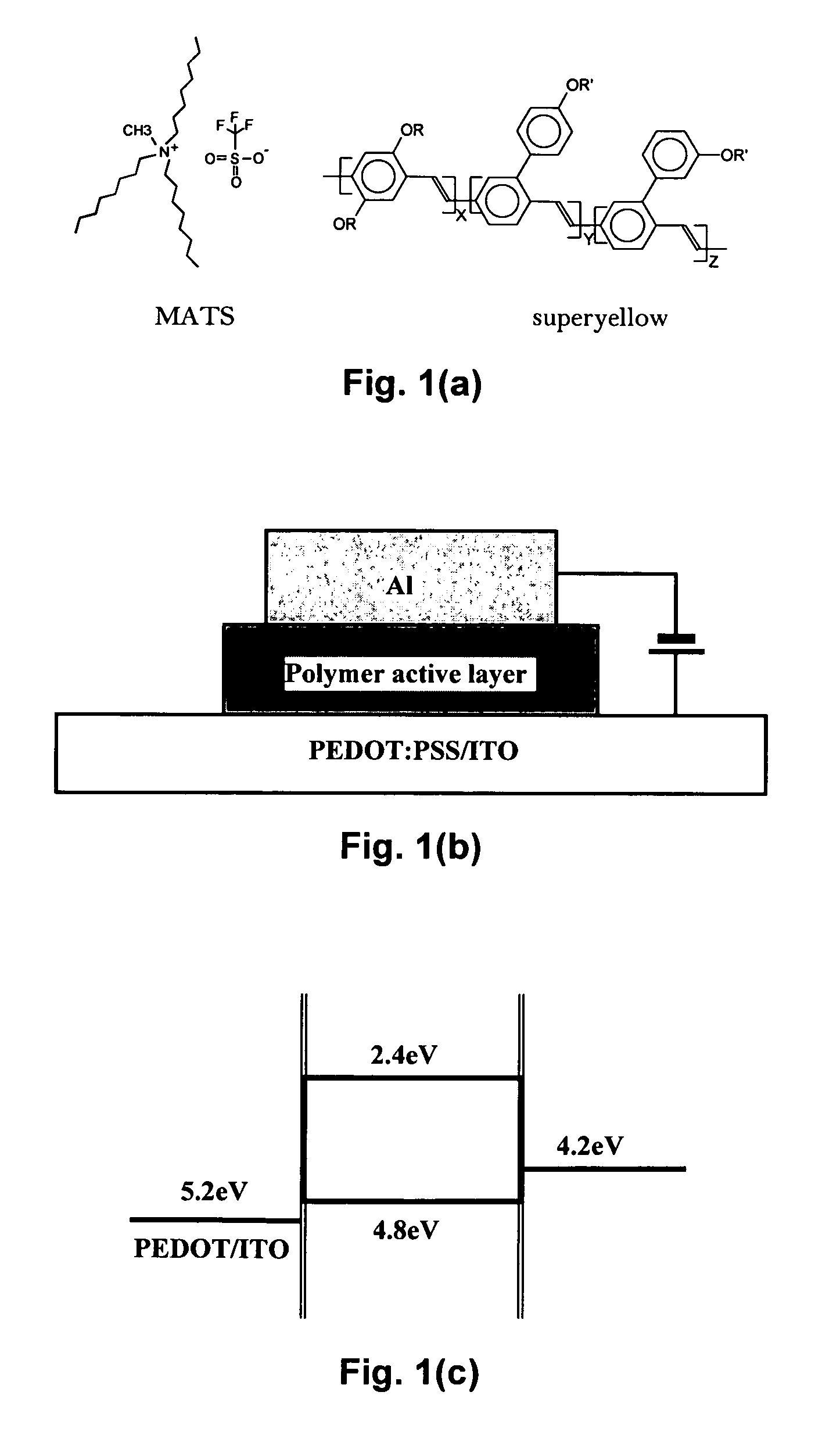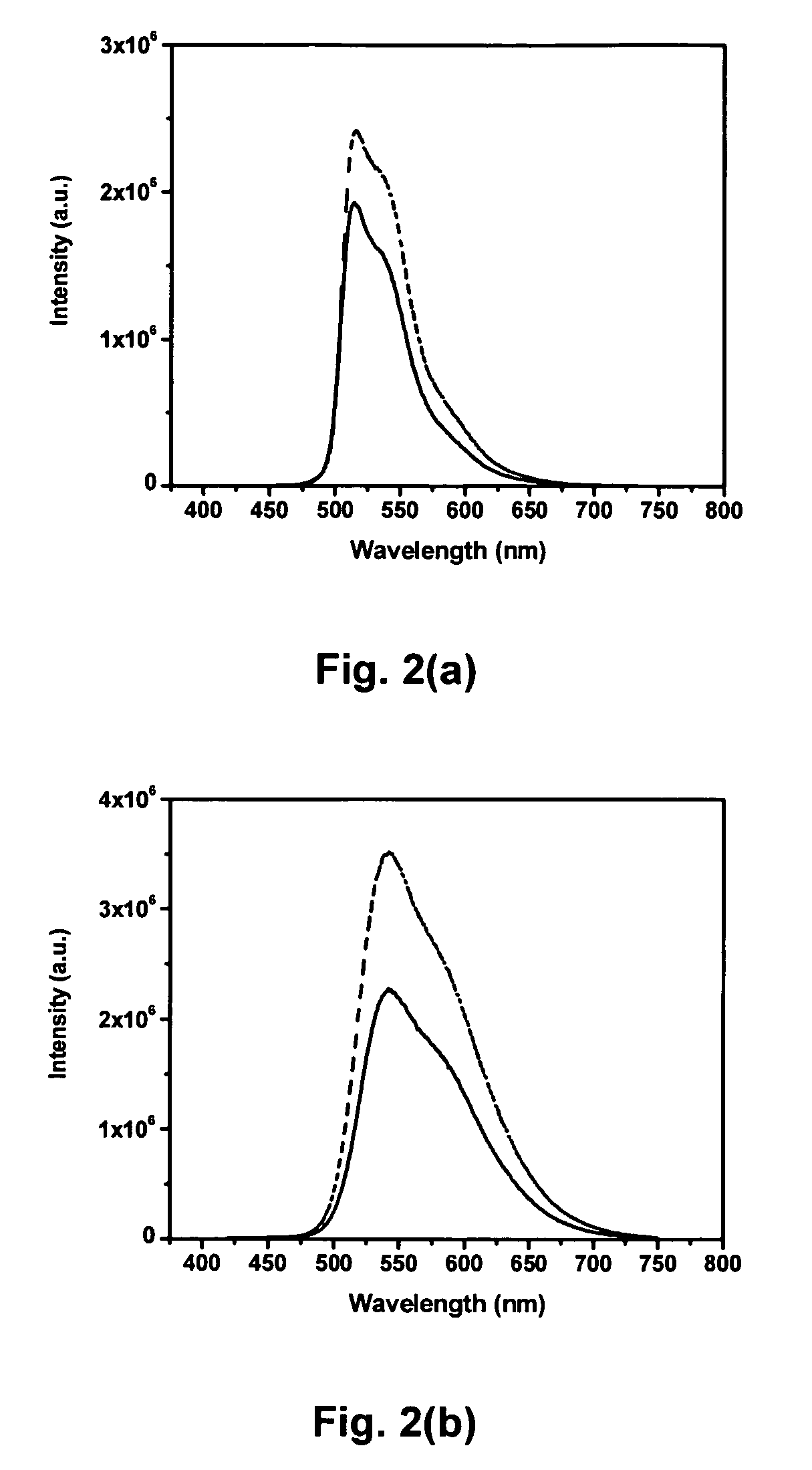Hybrid polymer light-emitting devices
a light-emitting device and hybrid technology, applied in solid-state devices, layered products, electrical devices, etc., can solve the problems of short response time, low work function cathode and/or thin interfacial layer, and inability to meet the requirements of polymer layers, etc., to achieve short response time, excellent current-rectification diode properties, and long operating life
- Summary
- Abstract
- Description
- Claims
- Application Information
AI Technical Summary
Benefits of technology
Problems solved by technology
Method used
Image
Examples
Embodiment Construction
[0037]In the devices described here, we utilized the simplest sandwich structure for the device configuration with poly(3,4-ethylenedioxythiophene)-poly(styrene sulfonate) (PEDOT-PSS) coated indium-tin-oxide (ITO) glass as the anode and aluminum as the cathode. A soluble phenyl-substituted poly(para-phenylene vinylene) (PPV) copolymer (“superyellow” from Merck KGaA, Frankfurter Str. 250, 64293 Darmstadt, Germany) was selected as our host light-emitting polymer and an organic ionic liquid, methyltrioctylammonium trifluoromethanesulfonate (MATS) was used to introduce a dilute concentration of mobile ions into the emitting polymer layer. The molecular structures of MATS and superyellow are shown in FIG. 1(a).
[0038]In other embodiments, light emitting polymers other than phenyl-substituted poly(para-phenylene vinylene) (PPV) copolymer, and its derivatives substituted at various positions on the phenylene moiety, can be used including, but not limited to poly(2-methoxy-5-(2-ethylhexyloxy...
PUM
| Property | Measurement | Unit |
|---|---|---|
| Tg | aaaaa | aaaaa |
| melting temperature | aaaaa | aaaaa |
| melting temperature | aaaaa | aaaaa |
Abstract
Description
Claims
Application Information
 Login to View More
Login to View More - R&D
- Intellectual Property
- Life Sciences
- Materials
- Tech Scout
- Unparalleled Data Quality
- Higher Quality Content
- 60% Fewer Hallucinations
Browse by: Latest US Patents, China's latest patents, Technical Efficacy Thesaurus, Application Domain, Technology Topic, Popular Technical Reports.
© 2025 PatSnap. All rights reserved.Legal|Privacy policy|Modern Slavery Act Transparency Statement|Sitemap|About US| Contact US: help@patsnap.com



